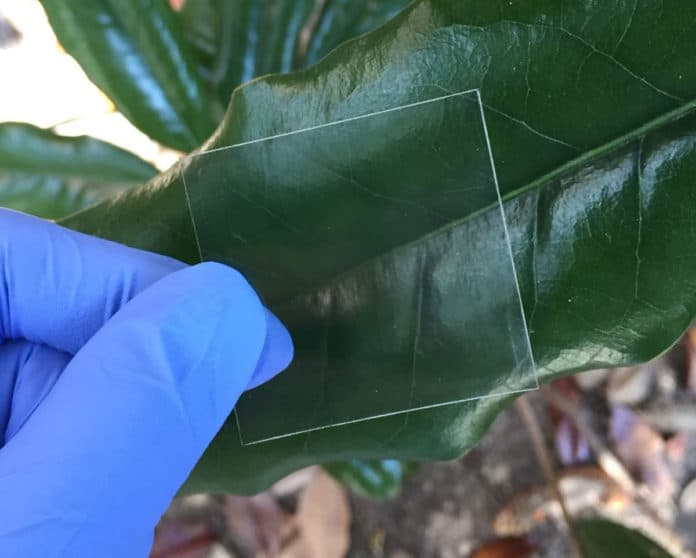While the smartphone industry is mastering flexible screens, Forest Products Laboratory (FPL) researcher Junyong Zhu in co-collaboration with colleagues from the University of Maryland and the University of Colorado, has developed a transparent wood material that can be used in a variety of industries. This material is seen as a potential replacement for the glass currently used in construction in nearly every way.
New transparent material looks like glass, but it is made entirely of wood. It is made from the wood of the Balsa tree (wick) – a tree of the flowering plant family, grows very fast and can reach a height of 30 m. Its wood has been widely used in fields such as model assembly, packaging, insulation, and floating equipment. The wood of this species is treated at room temperature, oxidizing in a special bleaching bath that bleaches it of nearly all visibility. The wood is then penetrated with a synthetic polymer called polyvinyl alcohol (PVA), creating a product that is virtually transparent.
Wood becomes transparent, like glass, but it also has the properties of plastic – it bends upon impact and crumbles like wood instead of breaking into sharp pieces like glass. According to the developers, the new material is stronger than ordinary glass, safer, more economical, and more efficient in terms of thermal protection.
The researcher team also noted in their paper that heat easily transfers through the conventional glass, especially single pane, and amounts to higher energy bills when it escapes during cold weather and pours in when it’s warm. Glass production in construction also comes with a heavy carbon footprint. Replacing conventional glass with wood glass can significantly reduce energy consumption and CO2 emission. The process of making new materials is also more environmentally friendly.
At present, the researchers are focusing primarily on the use of transparent wood in construction. Due to the high thermal efficiency of this material, it is ideal for windows. It can also be potentially used in the automotive industry, the smartphone industry, and other industries.
